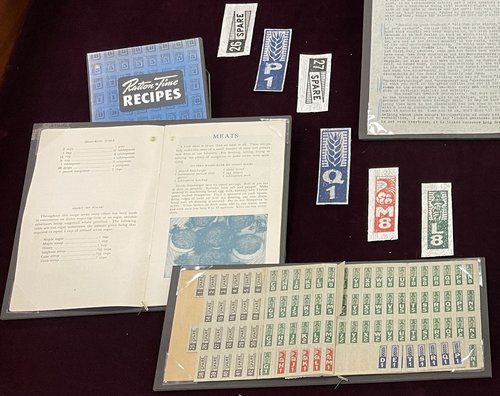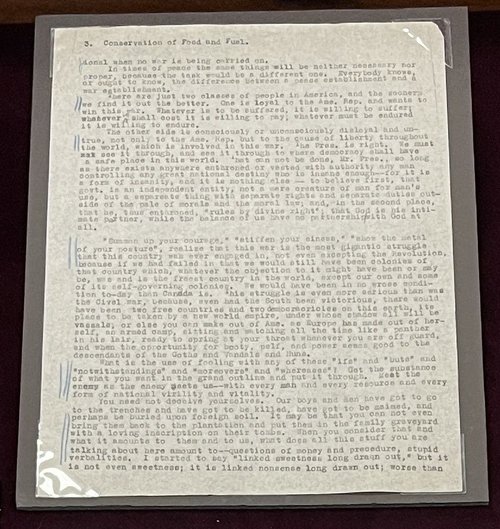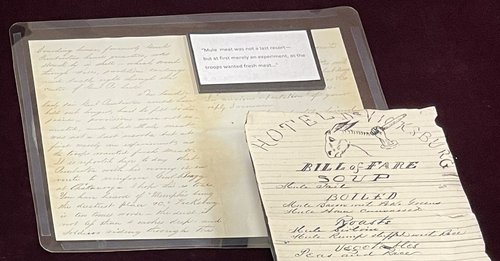Exhibits
Southern rations during the Civil War were adequate and varied in theory. In practice, not so much. Rebel soldiers were issued corn bread and bad beef, with corn bread the more constant provision. By 1863, things had gotten bad enough that mule meat was issued as a standard ration item to Rebel soldiers. After the surrender of Vicksburg there was a “Bill of Fare” found in one of the Confederate compounds. There is some uncertainty surrounding its origin. If it is the work of a Confederate soldier, it reflects the soul of a man who was able to keep his sense of humor despite almost unendurable hardships. If it was done by a Union prankster, he had to be a man familiar with conditions behind the Confederate lines.
During World War II, the United States suffered shortages of materials and consumer goods. In May 1942, five months after the U.S. entered WWII, prices were frozen on almost all consumer goods and a ration system was enacted in order to most fairly distribute foods and materials that were in short supply. Every American was issued a series of ration books, which contained removable stamps good for certain rationed items, like sugar, meat, cooking oil, and canned goods. A person could not buy a rationed item without also giving the grocer the right ration stamp. This meant planning meals carefully, being creative with menus, and not wasting food.
In the display case:

- World War II-era ration book and cook book, Ration-Time Recipes

- World War II-era "Conservation of Food and Fuel"

- Civil War era, "Mule meat was not a last resort -- but at first merely an experiment, as the troops wanted fresh meat."

- Civil War era, "Hotel de Vicksburg Bill of Fare"
